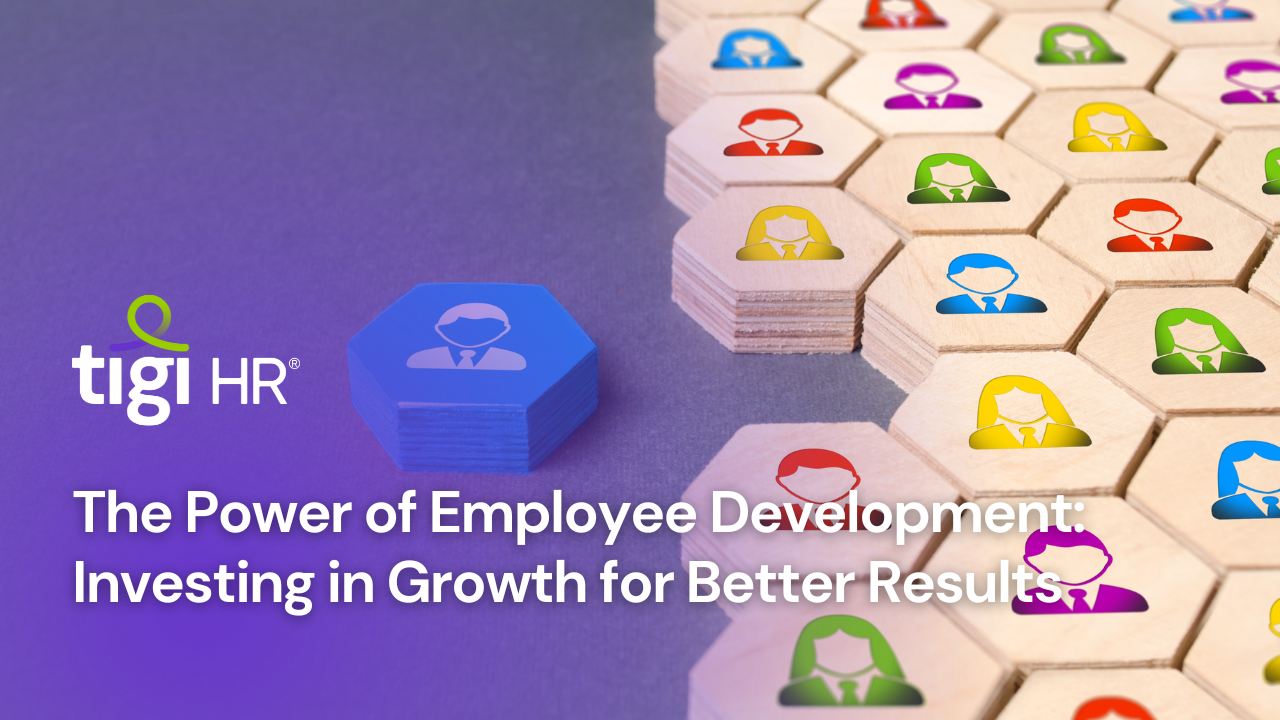In today’s competitive business landscape, organizations face a constant challenge: how to stay ahead of the curve and achieve sustainable growth. The answer often lies within their own walls — their employees. Employee development, when done strategically and effectively, has the potential to not only enhance individual skills but also drive organizational success. In this article, we will explore the significant impact of employee development, provide valuable insights, and offer practical strategies for investing in growth to achieve better results.
The Imperative of Employee Development
Employee development refers to the intentional efforts an organization makes to enhance the skills, knowledge, and capabilities of its workforce. It goes beyond traditional training and encompasses a holistic approach to nurture talent, foster growth, and drive employee engagement. The reasons for investing in employee development are compelling:
- Enhanced Performance: Employees who receive development opportunities tend to perform better in their roles. This improved performance can directly impact the organization’s bottom line.
- Retention and Engagement: Providing opportunities for growth and advancement is a powerful way to retain top talent and keep employees engaged and motivated.
- Innovation and Adaptability: A skilled and adaptable workforce is better equipped to drive innovation, adapt to change, and help the organization stay competitive.
- Succession Planning: Employee development lays the foundation for identifying and grooming future leaders within the organization, ensuring continuity and leadership stability.
Statistics Highlighting the Impact of Employee Development
To underscore the importance of employee development, let’s take a look at some compelling statistics:
- In a survey by LinkedIn, 94% of employees said they would stay longer at a company if it invested in their learning and development.
- Research by the Association for Talent Development (ATD) found that companies that offer comprehensive training programs have 218% higher income per employee than those with less comprehensive training.
- According to the Harvard Business Review, organizations that invest more in employee training and development spend 218% more per employee than their less engaged counterparts.
- A study by Gallup revealed that 87% of millennials consider development opportunities to be important in their job.
Strategies for Effective Employee Development
Now that we understand the significance of employee development, let’s explore practical strategies for implementing a successful development program:
1. Individual Development Plans (IDPs)
Encourage employees to create individual development plans that align with their career goals and the organization’s objectives. IDPs serve as roadmaps for personal growth and can help employees take ownership of their development.
Insight: A report by McKinsey found that organizations that effectively link employee growth to organizational objectives tend to outperform their peers.
2. On-the-Job Training
Provide opportunities for learning through real-life work experiences. Encourage employees to take on challenging projects, job rotations, or cross-functional assignments that can help them acquire new skills and broaden their horizons.
Insight: According to research by the Corporate Leadership Council, 75% of learning happens on the job.
3. Mentoring and Coaching
Establish mentoring and coaching programs that pair experienced employees with those looking to learn and grow. These relationships can provide valuable guidance, insights, and opportunities for skill development.
Insight: The American Society for Training and Development (now ATD) reported that 75% of executives credit mentoring with playing a key role in their career success.
4. Formal Training and Workshops
Offer formal training sessions and workshops that address specific skills and competencies needed within the organization. These can range from technical skills to leadership and soft skills development.
Insight: The American Management Association found that organizations that invest in formal training experience a 24% higher profit margin.
5. Online Learning and E-Learning Platforms
Leverage online learning platforms and e-learning courses to provide flexible and accessible development opportunities. This is particularly valuable for remote or distributed teams.
Insight: A study by eLearning Industry found that companies that use e-learning have the potential to boost productivity by 50%.
6. Cross-Functional Collaboration
Encourage employees to collaborate across departments and teams. Exposure to different perspectives and roles can broaden their skillset and enhance their adaptability.
Insight: A survey by the Society for Human Resource Management (SHRM) revealed that 92% of employees believe that cross-functional collaboration is important.
7. Continuous Feedback and Assessment
Implement a system of continuous feedback and assessment to track employee progress and make adjustments to development plans as needed. Regular check-ins and performance evaluations can provide valuable insights.
Insight: The Harvard Business Review found that employees who receive regular feedback are more likely to stay with their employers.
8. Employee Resource Groups (ERGs)
Support and encourage the formation of employee resource groups focused on various aspects of development, such as leadership, diversity, or innovation. ERGs can provide a sense of belonging and opportunities for growth.
Insight: A study by Catalyst found that companies with more women in leadership roles have been shown to financially outperform those with fewer women in leadership.
9. Recognition and Rewards
Recognize and reward employees who actively participate in development programs and demonstrate growth. Acknowledging their efforts can reinforce the importance of learning and development.
Insight: A survey by Achievers found that 98% of employees believe that recognition and appreciation from their managers are important for their engagement and job performance.
**10
. Data-Driven Decision-Making**
Use data and analytics to assess the impact of employee development programs. Identify which initiatives are most effective and adjust strategies accordingly to maximize ROI.
Insight: A report by Deloitte found that organizations using people analytics are 120% more likely to improve their recruiting efforts and leadership pipelines.
Conclusion
Investing in employee development is more than a strategic move; it’s a commitment to growth and success. As the statistics and insights reveal, organizations that prioritize employee development tend to outperform their peers, retain top talent, and foster a culture of innovation.
In today’s fast-paced and competitive business environment, organizations that empower their employees to learn, grow, and adapt are better positioned for long-term success. Employee development is not just an expense; it’s an investment in the future of both the organization and its workforce. It’s a powerful tool for achieving better results, driving innovation, and thriving in an ever-changing world.





